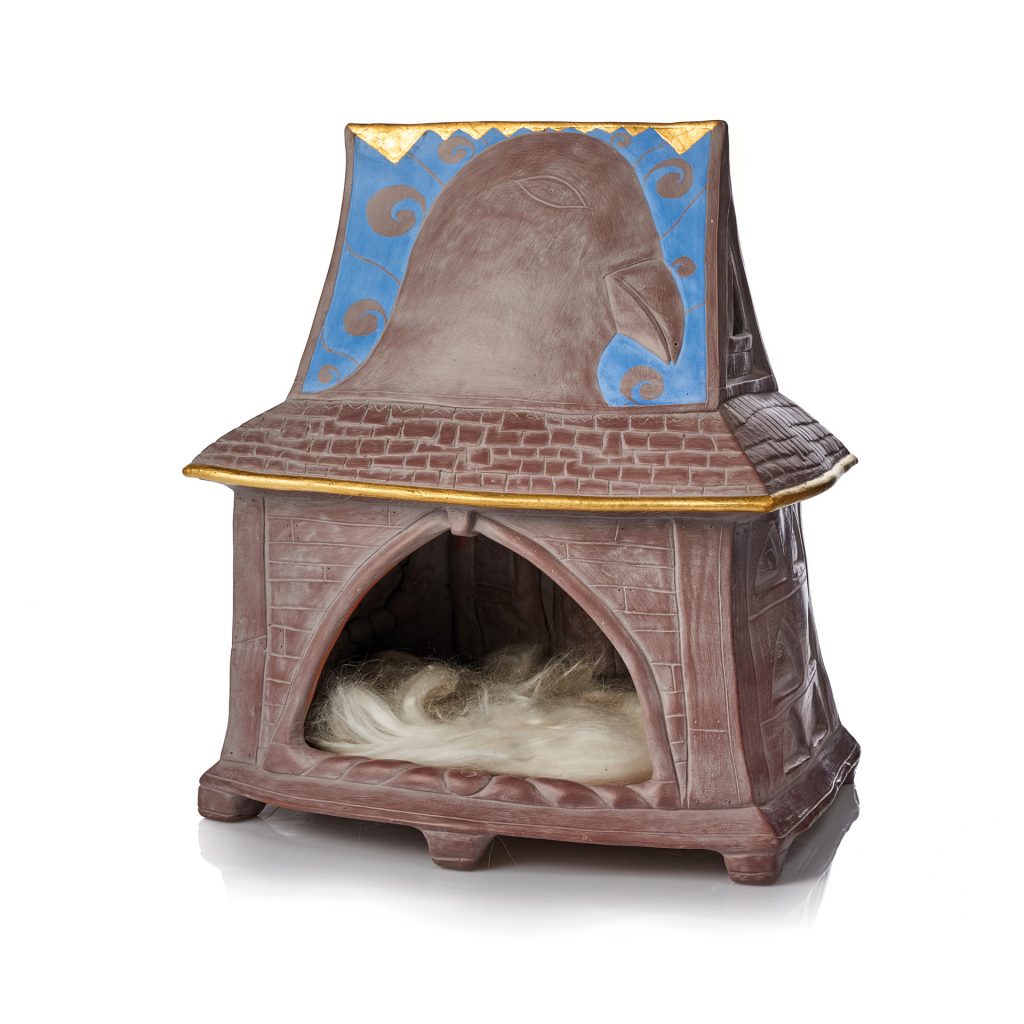Emmett Leader (b. 1954)
Etrog Box, 2009
Earthenware clay, terra sigillata glaze, gold leaf, flax
Museum Collection
Must Know
The Etrog holder is used to protect the Etrog (yellow citron used during the week-long holiday of Sukkot) traditionally wrapped in silky flax fibers and stored in a special box.
This box was made by Emmett Leader, a third-generation American from Vermont whose grandparents came to America from the European Shtetl. Rabbi Isaac Leader, the artist’s grandfather, was born in the Ukrainian shtetl of Slonim. Leader created a project called SLONIM REVISITED linking the village cultures of the Eastern European Jewish shtetl and the communities of rural New england where Jews had to remake and reinvent themselves in a strange land. This Etrog holder was one of the pieces in this grand project. Leader borrows from many sources, including gravestones from shtetl cemeteries, a 14th century Haggadah (Passover prayer book) and Biblical texts to fashion a family history in a stylized visual folk-language. This vernacular conveys both nostalgia for vanished folkways and continuity with ancient values. Inspired by the medieval illuminators of the Bird’s-head Haggadah, who dodged the biblical prohibition against graven images, Leader depicts Jews with the heads of birds (and big, Jewish beaks). The dove recurs frequently, serving as a metaphor of both the divine and the human spirit that longs for the holy. Dovecotes abound. The triangular form of the dovecote window is echoed in the Etrog holder. In the lexicon of Leader’s symbology, dovecotes allude to home, to a place of repose and sanctuary; they resemble another pictorial element, the ark that houses the scrolls of the torah, and they also carry an agricultural reference: dovecotes are often seen atop barns in Vermont.

